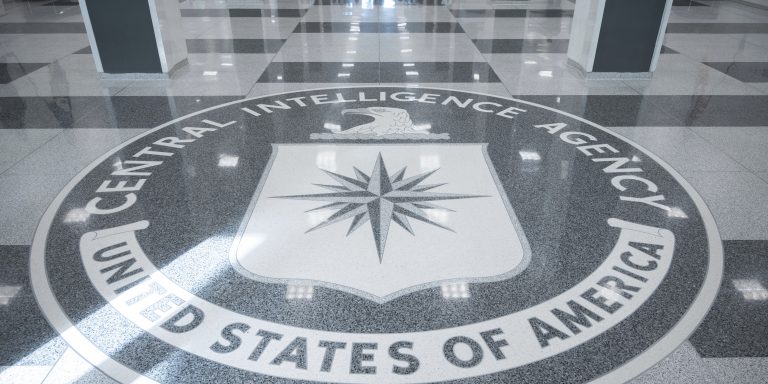
The Central Intelligence Agency (CIA), the U.S. foreign intelligence agency, has an unofficial motto and organizational ethos of “If it isn’t secret, it isn’t important.” This isn’t an ironclad rule — the CIA has long developed and refined its Open-Source Intelligence (OSINT) capabilities — but it remains somewhat of a foundational principle. For decades, the mission of the CIA and the larger U.S. Intelligence Community (IC) has understandably focused on clandestine collection efforts. This focus on hidden information has too often blinded the IC to that which is readily visible, though perhaps not always readily understandable. The tension between clandestine information operations and OSINT will never go away, nor should it; some things, such as the inner deliberations of an adversary, will always be hidden from open source information though they may be determined through closer discreet study. But the intentions of that adversary, or the early rumblings of global disruptions or conflicts such as a pandemic, global shipping issues, or an invasion, often hide in plain sight. What is therefore necessary is greater capacity to engage with wider sources of OSINT, deepen linguistic and cultural competencies to help properly process and analyze them, and ensure that the IC remains on top of new sources of information.
As noted recently by the Wall Street Journal, the U.S. government is lagging behind China in developing the capabilities to leverage OSINT effectively. There has been ample press on the perceived shortcomings of the U.S. vis-à-vis its most serious geopolitical rival. Yet, the issue of OSINT is different than other arenas, because it is not a capability the U.S. lacks, but a perception that persists that it is not important; in other words, open source is for amateurs and secrets are for pros. Even a cursory glance at the work of a firm like Bellingcat should quickly dispel this notion. The scale of the challenges facing the U.S. requires a fundamental shift in not just how the U.S. collects information but how it both analyzes and uses that information. OSINT needs to be a priority instead of relegated to an afterthought of the intelligence community.
OSINT isn’t secret but this doesn’t mean the information is easily obtained or understood by the broader public. Sometimes amorphous in nature, in this sense, ‘public’ means any data or information available by non-clandestine and non-technically exploitive means, obviating the need for hacking, espionage, or covert operations. There is a wealth of information that does not easily appear on Google but requires persistent and informed searching. There are terabytes and even petabytes and exabytes of information available in some form for nearly every major industry or trade — from oil and gas to transportation and logistics. Most large multinational corporations, including financial institutions, social media companies, healthcare networks, and global retailers, have developed their own in-house intelligence capabilities focused on emerging trends, consumer behaviors, risk mitigation, and geopolitics. This data and analysis are more than simply corporate information and intelligence aimed at gaining market share. Trends and specific developments in all manner of scientific endeavors and social challenges are considered OSINT, even if some specific uses of technology remain trade secrets. Furthermore, the information millions of people willingly, or sometimes unwittingly, provide to search engines and social media dwarfs in a week anything the U.S. intelligence community could ever hope to collect in a decade or more. There is no shortage of individual groups using OSINT for countless purposes, however, there is a shortage of U.S. IC focus on using the larger picture to understand smaller priorities. Utilizing, understanding, and leveraging such intelligence will be vital for the U.S. IC in the future, particularly in a renewed age of great power competition and the use of emerging technologies in conflict.
Shifting IC focus on OSINT must not mean increased scrutiny on individual privacy or tracking politically inconvenient or troublesome groups or issues, as the U.S. government has a history of overreach along those lines. Of all the resources the U.S. can dedicate to a specific challenge, time and focus are the two most precious. The U.S. can’t monitor everything because then it will understand nothing. Rather, the IC should facilitate and enable real-time tracking and persistent analysis of a clearly defined set of priorities and requirements on strategic issues. These priorities already exist, in the form of the National Security Strategy of the United States (NSS), the National Intelligence Priorities Framework (NIPF), and other mandated reporting requirements. The challenge for the IC is to place OSINT in the forefront of the effective tools/tactics needed to implement the various strategies of the Executive Branch. Moreover, human Intelligence (HUMINT) will remain vitally important and innovative agencies will need to find effective means of fusing HUMINT with OSINT for maximum impact. Ultimately, this “OSINT gap” matters more than any ‘missile gap’ or endless variation thereof, as it’s much larger than a military capability. It is not a capability as much as it is understanding and refocusing existing capabilities, while destigmatizing OSINT as a valuable asset in intelligence gathering. The age-old challenge of not finding more information but rather, understanding what one already has, has never been more pressing.
No comments:
Post a Comment